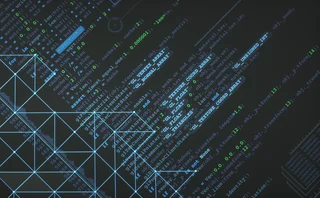Flash Crash Lessons Learned

What is your understanding of the technology shortcomings that helped contribute to the ‘Flash Crash' of May 6?
In order to understand what went wrong from a technology perspective, I guess you have to step back and look at the industry as a whole. In general, nobody has been able to point to a single root cause of the event, but the one lesson we've learned is that the market structure we are in is very complex - trading activity takes place across multiple exchanges and asset classes and is highly interlinked. In addition, the US regulatory approach does not have a single entity that is responsible for oversight across all these market centers and asset classes - the SEC oversees equities and options, CFTC oversees options and futures, etc. With this fragmented approach it is difficult to properly police these highly inter-related marketplaces. As such, several small individual changes in one part of this complex trading system can have major and very immediate effects on the system overall.
In terms of the deficiency of the technology, I think there were (are) a number of technologies in place that have a good purpose, but the problem was the disjointed approach. These risk management solutions of the exchanges and market participants didn't look at the market structure in its entirety - they just looked at one particular silo, and by that I mean trading activity in individual asset classes, in individual market centers, or even within individual business lines. These risk systems all do a reasonable job of protecting each particular silo, but that doesn't really help because trading happens across silos and is highly ‘networked'. I wouldn't necessarily point fingers and say that this or that is a bad technology, but risk management solutions before May 6th did not have the right focus and they were not designed to address the risk management challenges associated with an interlinked and quickly responding and evolving global market structure.
How has the introduction of circuit breakers in the US fared so far?
Circuit breakers on individual stocks were implemented by US exchanges after the May 6 Flash Crash for S&P 500 index companies. The SEC is currently considering expanding the scope of this program to Russell 1000 Index funds and 300 ETFs. So far, the circuit breakers have been triggered a couple of times, yet it seems they point more toward individual fat-finger errors or wide but normal price swings on some stocks rather than systemic issues. As such, recommendations are being made to introduce a tiered system of trigger points for different stocks and maybe to shift the focus from individual errors to more systemic errors - also pointing back to the obligations of the broker to monitor and prevent fat-finger errors rather than the exchanges triggering a trading halt due to individual erroneous orders.
What, in your opinion, was the root cause of the May 6 crash?
No one really knows the root cause of the Flash Crash, and I don't think there was a single root cause. It was a combination of a lot of factors. I think May 6 was a wake-up call. FTEN thinks that the event demonstrated that most risk management solutions today are myopic and don't allow for meaningful aggregation of clients' and firms' trading activities and associated risk taking inclusive of the cross-asset class activity. Introducing circuit breakers is a great first step and it will go a long way to stopping future events like May 6, but we feel that circuit breakers are a post-trade measure and they are implemented at the exchange level. So while that is a good first step, we think it's not going far enough.
So what extra steps should be taken?
We think there should be more proactive and preventative measures - not only at the exchange level but across all silos throughout the entire industry.
Let's talk specifically about implementing proactive measures across the industry. What is the scenario you're proposing?
You have a number of trading participants - the buy side, the sell side, the clearers and the exchanges - and we believe risk management within all these constituents needs to be more proactive and preventative and take a more comprehensive and real-time approach. What we have learned is that risk management of tomorrow cannot be done in silos. You have to build risk management systems that work across asset classes, market centers, and internal organizational boundaries. Also, as markets are becoming increasingly global, real-time risk management needs to adopt a "follow the sun" approach to truly reflect risk associated with certain trading activity.
The other thing we have learned is that risk management needs to be managed in real time. The May 6 events happened incredibly quickly. Risk management as a back-office function that is batched and managed on an end-of-day basis is not good enough for the future. Risk management systems of the future need to be active - the system needs to conduct pre-trade risk checks, but it also needs to be able to actively influence the order flow by directly interacting with the trading activity. If you look at the NYSE's LRP (Liquidity Replenishment Points), it is a system designed to manually control the order flow, but we believe that it's not good enough to control trading activity manually in the future. Risk systems need to be able to automatically limit or completely stop specific order flow in real time.
What aspect of FTEN's technology allows participants to manage their risk on a real-time basis?
The intent of the infrastructure that we provide is to ensure that we empower the business decision makers within brokers, clearers, exchanges, and hedge funds with real-time insights into the risks associated with the trading activity of all of their internal and external clients, and to empower them technically to prevent erroneous orders or excessive risk taking or mitigate risk taking when needed. An important part of this is that our solutions are geared toward a fast, distributed, and global trading environment, for example high-frequency trading where organizations trade across multiple locations and asset classes at a very fast pace.
Only users who have a paid subscription or are part of a corporate subscription are able to print or copy content.
To access these options, along with all other subscription benefits, please contact info@waterstechnology.com or view our subscription options here: https://subscriptions.waterstechnology.com/subscribe
You are currently unable to print this content. Please contact info@waterstechnology.com to find out more.
You are currently unable to copy this content. Please contact info@waterstechnology.com to find out more.
Copyright Infopro Digital Limited. All rights reserved.
As outlined in our terms and conditions, https://www.infopro-digital.com/terms-and-conditions/subscriptions/ (point 2.4), printing is limited to a single copy.
If you would like to purchase additional rights please email info@waterstechnology.com
Copyright Infopro Digital Limited. All rights reserved.
You may share this content using our article tools. As outlined in our terms and conditions, https://www.infopro-digital.com/terms-and-conditions/subscriptions/ (clause 2.4), an Authorised User may only make one copy of the materials for their own personal use. You must also comply with the restrictions in clause 2.5.
If you would like to purchase additional rights please email info@waterstechnology.com
More on Trading Tech
Will overnight trading in equity markets expand next year? It’s complicated.
The potential for expanded overnight trading in US equity markets sparked debate this year, whether people liked it or not.
WatersTechnology latest edition
Check out our latest edition, plus more than 13 years of our best content.
The total portfolio approach gains momentum: Building the right tech foundation for success
The rationale for the TPA, and the crucial role technology plays in enabling such an approach
Google, CME say they’ve proved cloud can support HFT—now what?
After demonstrating in September that ultra-low-latency trading can be facilitated in the cloud, the exchange and tech giant are hoping to see barriers to entry come down.
Institutional priorities in multi-asset investing
Private markets, broader exposures and the race for integration
BlackRock and AccessFintech partner, LSEG collabs with OpenAI, Apex launches Pisces service, and more
The Waters Cooler: CJC launches MDC service, Centreon secures Sixth Street investment, UK bond CT update, and more in this week’s news roundup.
TCB Data-Broadhead pairing highlights challenges of market data management
Waters Wrap: The vendors are hoping that blending TCB’s reporting infrastructure with Broadhead’s DLT-backed digital contract and auditing engine will be the cure for data rights management.
Robeco tests credit tool built in Bloomberg’s Python platform
This follows the asset manager’s participation in Bloomberg’s Code Crunch hackathon in Singapore, alongside other firms including LGT Investment Bank and university students.








